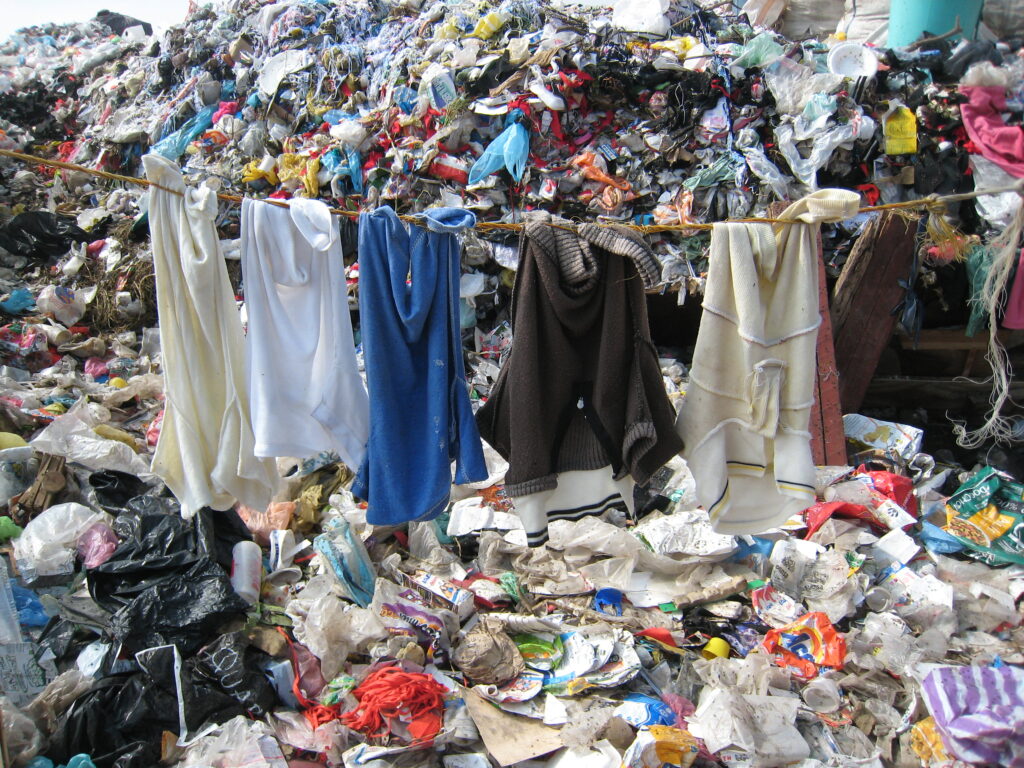By Claudia Gutierrez, Spring 2022 Environmental Clinic Student
When people think of environmental issues, the first thought that comes to mind is climate change due to greenhouse gases or air pollution created by new infrastructure. While that may be true, the fashion industry is often overlooked.
More and more people expect clothing to be cheap and to be delivered quickly, especially now that COVID-19 made online shopping the main platform. To accomplish this, companies are using more polyester, which may be cheap to make, but it is nonrenewable and requires a lot of energy to heat the water and run the washing machines. Additionally, the effects of clothing production on the environment include: land pollution due to fertilizer and pesticide spray used for cotton, water pollution due to the dye that colors our clothing, air pollution due to the toxic gases that are produced from the clothing manufacturing industry, marine pollution due to microfibers that are generated when washing clothes, and biodiversity loss due to fabric pieces in the ocean that kill species as well as the production of real leather and fur fashion items. All this pollution adversely impacts our oceans, rivers, streams, and our land.
Less than 1% of clothing is recycled. Over 500 billion dollars are lost annually from the under-wearing of and inability to recycle or sell clothes. Most of the clothes you donate to H&M or Zara end up in landfills in poor countries. For instance, in Chile, mountains of clothing are taking over Atacama Desert. Families are going through mass layers of clothing in an attempt to find clothes for their family, but most of it is unusable and takes up to 200 years to biodegrade. Because clothing is sold and distributed worldwide, because it costs the same price to buy a new suit as it does to fix one, because buying a t-shirt will cost less than buying a fast-food meal, the production of clothing will not stop causing harm until people stop wanting to buy clothes. That will likely never happen, but there are ways to decrease the impact fashion has on the environment.
Fashion designer Mohamed Benchellal had a great idea about fashion industry moving towards true exclusivity: Entice people to purchase clothes that are each their very own unique pieces made from leftover or old fashion trends that would otherwise be dumped. Buying less, lowering the demand for more clothing, paying more for better pieces that will last longer in your closet, and sharing your old clothes with people around you could help move fashion into a less costly and hurtful product. Also, consider donating to women’s domestic shelters (e.g., suits or dresses for court), homeless shelters, or local churches, which are all places that could use your old clothing and pass it onto people who need it, versus it being dumped in a poor country through donation via big brand companies. Further, having the government tax industries on using materials harmful to the environment, like virgin plastic, might make clothing more sustainable. It might incentivize industries to spend money on organic cotton over regular cotton treated with chemicals. Making policies or regulations that companies must abide by to lessen the footprint of clothing would help.
The articles published on this site reflect the views of the individual authors only. They do not represent the views of the Environmental Clinic, The University of Texas School of Law or The University of Texas at Austin.

